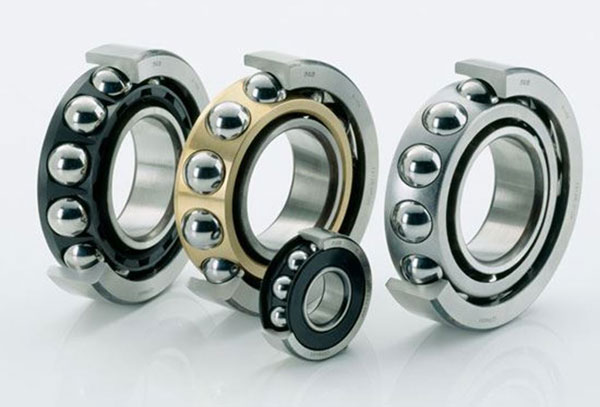Angular Contact Ball Bearings
Angular contact ball bearings are a type of roller bearing, designed to carry both axial and radial loads. Using two balls to form a single unit, they have a 35deg contact angle and wear rapidly. Because they're made of balls, they're usually used in pairs. If you're thinking about buying a set, you may be wondering whether they're worth the money. Here are some important facts about these bearings.
Angular contact ball bearings are designed to carry radial and axial loads
Angular contact ball bearings have asymmetric construction and are used for combined radial-axial loads. These types of bearings are easy to install and require minimal maintenance. The ring races of an angular contact ball bearing are displaced along the axis of the bearing, allowing it to carry higher axial loads. They are suitable for rigid axial guidance and are widely used in pumps, machinery, and automotive applications.

They are used in pairs
Angular contact ball bearings are cylindrical roller bearings that are designed to handle combined radial and axial loads. Angular contact ball bearings can accommodate 15-degree contacts between the balls. The angular contact angle determines the bearing's axial load capacity. Higher angles ensure greater axial load capacity. Typically, angular contact ball bearings are used in pairs.
They have a 35deg contact angle
In order to increase the axial load capacity of a bearing, the contact angle should be larger. Conversely, a smaller contact angle will improve stiffness and speed capacity. An angular contact ball bearing with a 35deg contact angle is usually used in pump applications where it requires high speed and a high thrust load capacity. Depending on the application, a duplex set of angular contact ball bearings may be used instead of one.
They wear rapidly
Angular contact ball bearings are characterized by offset inner and outer rings. They can accommodate combined radial and axial loads. As the contact angle increases, so does the axial load carrying capacity of an angular contact ball bearing. A combined load is transmitted along the axis perpendicular to the bearing axis. Angular contact ball bearings are widely used in many industries and are particularly suitable for high-speed, high-relative sliding applications.
They are lubricated
The problem of determining the internal flow field of oil-lubricated angular contact ball bearings is a difficult one. Different approaches use a different method to solve the problem. Most of these approaches do not consider heat conduction in the bearing ring. Furthermore, these approaches have a difficult time achieving convergence in the case of multiphase flow or transient analysis. Moreover, they require too much computational workload to obtain a steady-state temperature rise.
- Previous: Advantages and Disadvantages of Ceramic Ball Bearings
- Next: Single-Row and Double-Row Ball Bearings











